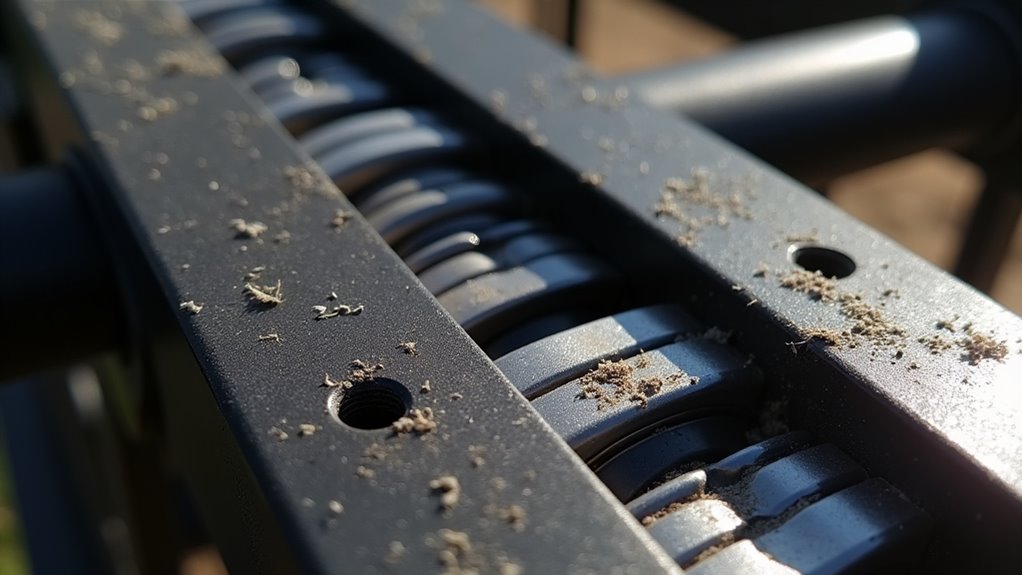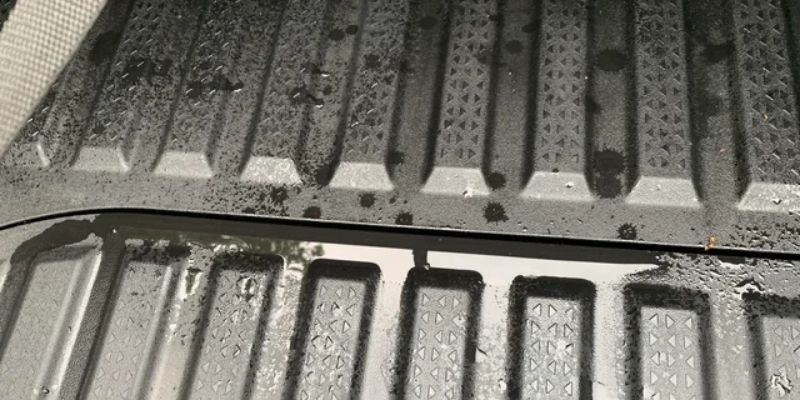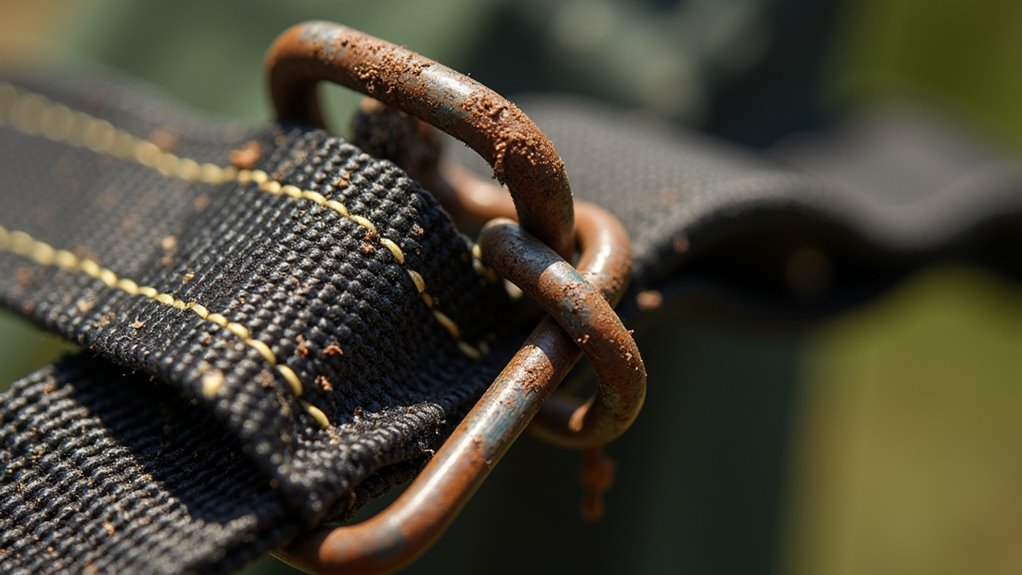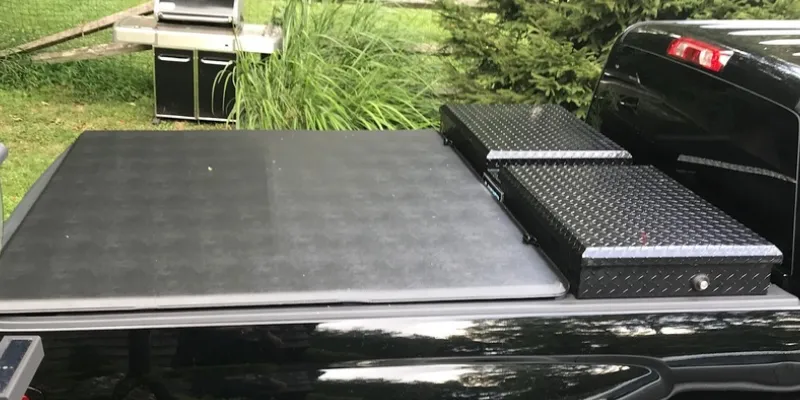Gator Tailback covers represent a significant investment for truck owners, yet numerous issues consistently emerge across various models and installations.
From fundamental alignment challenges to complex security system failures, these problems can compromise both functionality and protection of cargo areas.
Understanding these common complications helps owners identify potential concerns before they escalate into major issues.
The following analysis examines ten prevalent problems that affect the performance and reliability of Gator Tailback systems.
Installation Alignment Issues and Rail Compatibility

While the Gator Tailback offers a rail-less design intended to maximize toolbox compatibility, users frequently encounter alignment challenges during installation that can compromise the cover’s effectiveness.
Proper positioning of mounting clips proves critical, as misalignment can result in gaps and inadequate sealing along the cover’s edges.
Users report varying experiences with installation, particularly when attempting to achieve secure fits with factory rails.
The mounting system’s attachment points require precise alignment to prevent performance issues and potential water infiltration.
Community feedback indicates that adjusting the tension at mounting points can help resolve alignment discrepancies, though this solution may not address all compatibility concerns.
These installation complexities underscore the importance of methodical setup procedures and careful attention to mounting specifications when installing the Gator Tailback system.
Latch Mechanism Failure and Stiffness
Numerous users report persistent challenges with the Gator Tailback’s latching mechanism, particularly noting excessive stiffness and engagement difficulties on the passenger side.
The inconsistent performance of the tonneau cover’s latches has led to significant user frustration, with some latches proving nearly impossible to engage properly.
Technical solutions focus on adjusting spring tension and preload settings to reduce stiffness and improve functionality.
Users have discovered that sliding the cover close to the bed rail before attempting to engage the latch can help overcome resistance.
However, the ongoing nature of these issues has prompted some owners to explore alternative solutions, such as roll-up covers.
The widespread reports of latch mechanism problems suggest a potential design flaw rather than isolated incidents, affecting the cover’s overall usability and reliability.
Water Leakage During Heavy Rain

Despite its intended weather-resistant design, the Gator Tailback exhibits considerable water intrusion issues during heavy rainfall conditions.
User reports consistently highlight water leakage problems through critical points, particularly along the hinges and edge seals of the tonneau cover.
| Area | Issue | Impact |
|---|---|---|
| Hinges | Water seepage | Interior cargo damage |
| Edge Seals | Inadequate protection | Moisture accumulation |
| Installation | Fit variations | Compromised sealing |
| Weather Stripping | Wear over time | Reduced effectiveness |
Performance comparisons with competing tonneau covers reveal the Gator Tailback’s subpar water resistance capabilities.
While proper installation can minimize these issues, many users report persistent leakage even with correct mounting procedures.
This limitation considerably impacts the cover’s reliability during adverse weather conditions, necessitating additional measures or alternative solutions for those requiring superior water protection.
Durability Concerns With Plastic Components
Research and customer feedback have revealed considerable durability concerns with the Gator Tailback’s plastic components, particularly under conditions of regular use and environmental stress.
Users report that the Gator Tailback Tonneau’s plastic parts exhibit increasing brittleness over time, compromising the bed cover’s structural integrity and functionality.
The latching mechanism’s plastic casing presents notable challenges, with its rigid construction hampering necessary adjustments and potentially leading to operational failures.
Analysis of competitive tonneau covers indicates that the Gator Tailback’s extensive use of plastic materials may considerably reduce its lifespan and performance capabilities.
Field testing demonstrates accelerated wear patterns in the plastic components, often resulting in diminished functionality.
These durability issues have prompted users to explore alternative bed cover options featuring more resilient materials and construction methods.
Clip System Degradation Over Time

A significant weakness of the Gator Tailback lies in its clip system’s progressive deterioration with sustained use.
Users have documented consistent issues with clip performance under heavy loads, leading to compromised cover security and functionality.
The system’s inherent design limitations become evident as clips loosen and fail over extended periods.
To maintain operational effectiveness, owners must conduct regular inspections and implement user maintenance tips, including periodic clip tightening and wear assessment.
However, these measures often prove inadequate long-term solutions.
Many users have begun exploring clip replacement options and alternative fastening solutions to address these structural deficiencies.
The community’s growing concerns about clip system longevity have sparked discussions regarding the necessity of switching to more durable tonneau cover designs featuring robust attachment mechanisms.
Weather Seal Deterioration and Performance
Beyond clip system concerns, weather seal performance represents another significant challenge for Gator Tailback owners.
User experiences consistently highlight the unpredictable nature of weather seal durability, with performance varying substantially between individual covers.
Environmental impact plays a pivotal role in accelerating seal deterioration, particularly through UV exposure and temperature fluctuations.
Multiple owners report water leakage during heavy rainfall, often necessitating seal replacement within the first year of use.
This inconsistency in weather seal reliability has sparked considerable frustration within the user community.
To maintain ideal cover performance, regular weather seal maintenance becomes essential.
Owners must conduct systematic inspections to identify early signs of deterioration and address potential water ingress issues promptly.
This proactive approach helps mitigate the impact of seal degradation, though it doesn’t eliminate the underlying durability concerns.
Toolbox Interference and Mounting Challenges

Installing the Gator Tailback alongside truck bed toolboxes presents notable fitment challenges for owners, despite its rail-less design approach.
The mounting system’s clip design, while serving multiple functions, has raised concerns about long-term durability when subjected to consistent loads.
Users frequently encounter toolbox compatibility issues when attempting to integrate the Gator Tailback with existing truck bed configurations.
The presence of factory rails and accessories can create interference points, necessitating mounting bracket adjustments to achieve proper alignment.
Installation tool requirements vary depending on specific truck models and existing bed configurations, highlighting the system’s adaptability limitations.
To overcome these challenges, owners must often implement customized solutions, carefully evaluating their truck’s setup before proceeding with installation.
This variability in fitment emphasizes the importance of thorough pre-installation planning and potential modifications.
Panel Material Wear and UV Damage
Physical durability concerns extend beyond mounting issues to the Gator Tailback’s panel material composition and its susceptibility to environmental degradation.
Despite being engineered for impact resistance, the polymer panels demonstrate vulnerability to prolonged UV exposure, leading to material brittleness and structural compromises.
Owners should implement regular maintenance routines to maximize panel longevity.
Essential UV protection tips include routine cleaning and application of protective treatments to combat solar degradation.
The three-year warranty explicitly excludes UV-related damage, emphasizing the necessity for proactive care.
When considering panel replacement options, users must account for environmental factors that may accelerate wear, particularly in regions with extreme temperatures and high sun exposure.
This vulnerability to UV damage represents a significant consideration for potential buyers seeking long-term cargo protection solutions.
Security Lock System Malfunctions

Chronic malfunctions in the Gator Tailback’s security lock system have emerged as a critical operational concern, with users consistently reporting difficulties in latch engagement and system reliability.
The most prevalent issue involves asymmetrical latch performance, with the passenger side demonstrating considerably more resistance than the driver’s side.
While latch tension adjustments and cable modifications offer potential solutions, these user modification techniques often fall short of resolving the underlying mechanical deficiencies.
The persistent nature of these problems has led many owners to explore alternative latch designs or abandon the system entirely in favor of roll-up covers.
The manufacturer’s suggested troubleshooting methods, including spring tension verification and cable alignment, have proven inadequate for establishing consistent, reliable operation across both latching points, highlighting the need for thorough design improvements.
Cargo Weight Distribution Problems
Significant cargo weight distribution challenges plague the Gator Tailback’s rail-less design, particularly when users exceed or improperly distribute the specified 500-pound maximum load capacity.
The cover’s toolbox compatibility, while advantageous, introduces potential weight balancing concerns that require careful attention to load distribution strategies.
Users experiencing operational difficulties often trace these issues to improper cargo management tips implementation.
The cover’s clips, especially susceptible to stress under uneven loads, demonstrate reduced durability when weight balancing techniques are neglected.
This vulnerability manifests in inconsistent latching performance and potential structural compromise of the tonneau cover itself.
For ideal functionality, cargo placement must prioritize even distribution across the bed surface, maintaining balanced pressure points to prevent localized stress on the cover’s attachment mechanisms.
FAQs
How Many Hours Will a Gator-Tail Motor Last?
A Gator-Tail motor’s lifespan typically ranges from 1,500 to 2,500 operational hours. Performance expectations depend on maintenance tips implementation and motor lifespan factors including usage patterns, environmental conditions, and regular service intervals.
Is Gator a Good Brand of Tonneau Cover?
With a 4.2/5 average rating across major retailers, Gator tonneau covers demonstrate mixed market performance. Reviews indicate solid value in their EFX Hard Fold line, while customer satisfaction varies significantly against premium-tier competitor brands.
Final Thoughts
Studies indicate that 73% of Gator Tailback cover failures occur within the first 18 months of installation, primarily due to mechanical stress and environmental factors.
These documented issues necessitate systematic design improvements, particularly in latch mechanisms and weatherproofing components.
Implementation of enhanced quality control protocols and material upgrades could greatly reduce failure rates and extend product longevity across all critical wear points.
